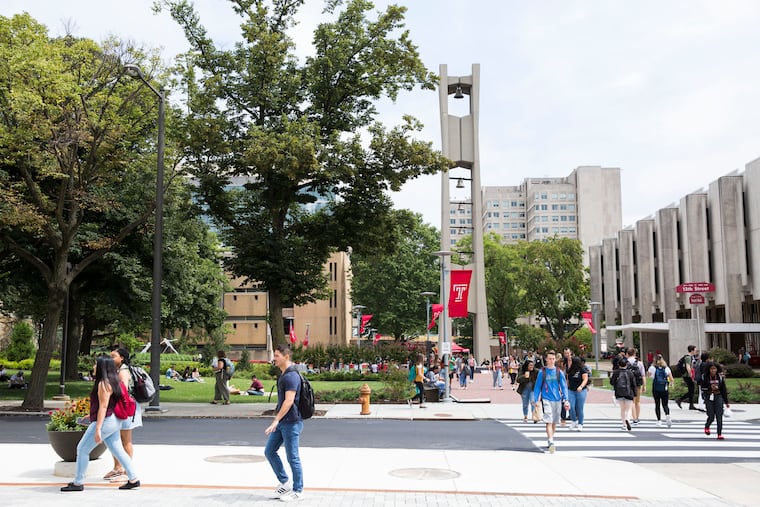3 mumps cases reported at Temple University. Here’s what we know.
A university email sent to nearly 40,000 students, faculty and staff members Friday morning said that three students have tested positive for mumps since the beginning of the semester.

At least three students at Temple University have contracted the mumps since the beginning of the spring semester, according to an email from Student Health Services sent Friday to nearly 40,000 students and thousands of staff and faculty members.
The Philadelphia Department of Public Health confirmed two positive cases and one probable case.
“We’re working closely with Temple Student Health and are hopeful that the vaccine clinics from last year and Temple’s quick action will stop this before anyone else gets sick,” said Jim Garrow, health department spokesperson.
Temple spokesperson Ray Betzner said that all three students are well and back in class. In Friday’s email, Mark Denys, senior director of health services, said that Student Health Services was working directly with “those students and those who may have come into contact with them ... and [taking] steps to prevent the spread of the virus.”
“But because of what happened last year, we felt that we needed to let the community know how to keep themselves healthy,” Betzner said.
Last year, 186 confirmed cases of mumps were reported after an outbreak began at Temple in March, ultimately affecting 175 students, two faculty members, and nine people with no connection to the university.
Here’s what you need to know about the contagious viral disease.
What are the symptoms of mumps?
Common symptoms, which most people experience about 16 to 18 days after exposure, include swollen salivary glands, fever, headache, chills, muscle aches, tiredness, and loss of appetite. In serious cases, which are rare among people who were vaccinated as children, mumps can cause brain inflammation, deafness, or sterility.
The disease spreads through direct contact with saliva or respiratory droplets.
There is no cure for mumps, similar to the flu, but symptoms go away for most people after 10 days. Those showing symptoms should avoid contact with other people.
How did Temple handle last year’s outbreak?
Last spring, Temple offered two walk-in clinics for students to receive the measles, mumps, and rubella vaccine at no charge, and administered 4,819 doses.
Last year’s outbreak also led Temple to change its vaccination policy. This year, Student Health Services required newly enrolled students to provide proof of two doses of the MMR vaccine.
Are other colleges dealing with mumps outbreaks?
Overall, there’s been a 99% decline in mumps cases in the United States since the vaccine was introduced in 1967. But a growing number of colleges have reported mumps outbreaks in recent years. The outbreaks have resurfaced concerns that the mumps vaccine may lose strength over time.
Aside from Temple, the College of Charleston had an outbreak of 77 cases in 2019. In 2017, Pennsylvania State University had an outbreak of more than 40 cases.
Experts say college environments are part of the risk — students live in close quarters, and often exchange saliva through kissing or sharing food and drink.
Although the Centers for Disease Control and Prevention recommends only two doses of the MMR vaccine — one when a child is 12 to 15 months old, and another when 4 to 6 years old — a booster shot should be administered during an outbreak situation.
So far this year, there have been eight confirmed cases of mumps and five probable cases in Pennsylvania, according to the state Department of Health.
How can I protect myself from mumps?
The best way to keep yourself healthy is to avoid sharing food and drinks with others, especially those with symptoms. Wash your hands frequently, and use hand sanitizer when unable to use soap and water.